Kashmir’s Wetlands - Crying To Be Restored
First published in Sanctuary Asia,
Vol. 41
No. 12,
December 2021
By Asad Rahmani
Imagine the Uttarakhand government looking the other way, while the timber mafia decimates the famous Corbett National Park and poachers slaughter its fabled wildlife. Imagine the fabulous Kanha National Park’s meadows being over-run by livestock, leaving no space for the iconic hard-ground barasingha. Or, for that matter, the picturesque jheels of the Keoladeo National Park being drained, and its bunds and sluice gates falling into disrepair.
The country would be up in arms and horrified. The media would sharply criticise government apathy and incompetence, activists would go to court, and questions would be asked in our various Legislative assemblies and both houses of Parliament. The National Green Tribunal would pass orders and the Supreme Court would take suo motto cognisance and issue orders. Every opposition leader would call for the resignation of the State and Union Forest Ministers. Heads would roll in the Forest Department, starting with the Directors of our most precious national parks and sanctuaries of virtually any state where such damage was sought to be inflicted.
Not, however, in Jammu and Kashmir it would appear, where the habitat of nearly 5,00,000 birds is being ruined in the Shallabugh wetland. Not a peep in the national media about the gross damage inflicted on the wetland home of 6,00,000 birds, in their winter refuge in the Hokersar Wetland by the Irrigation and Flood Control Department that ill-advisedly drained their winter home!
At the very least an alarm should have been raised by the thousands of Kashmir’s birdwatchers whose records of bird sightings are faithfully recorded in the eBird archives. I was pained to see that an alarm was not raised by wildlife-trained field and department staff whose primary duty happens to be the protection of these fabled J&K wetlands? How could the Irrigation and Flood Control Department be allowed to drain Hokersar so ruthlessly? Why was the bund not repaired in Shallabugh in time to allow it to retain water? Why were there no protests by local conservationists? I would have hoped that the High Court at the very least could have taken suo moto notice of this damage.
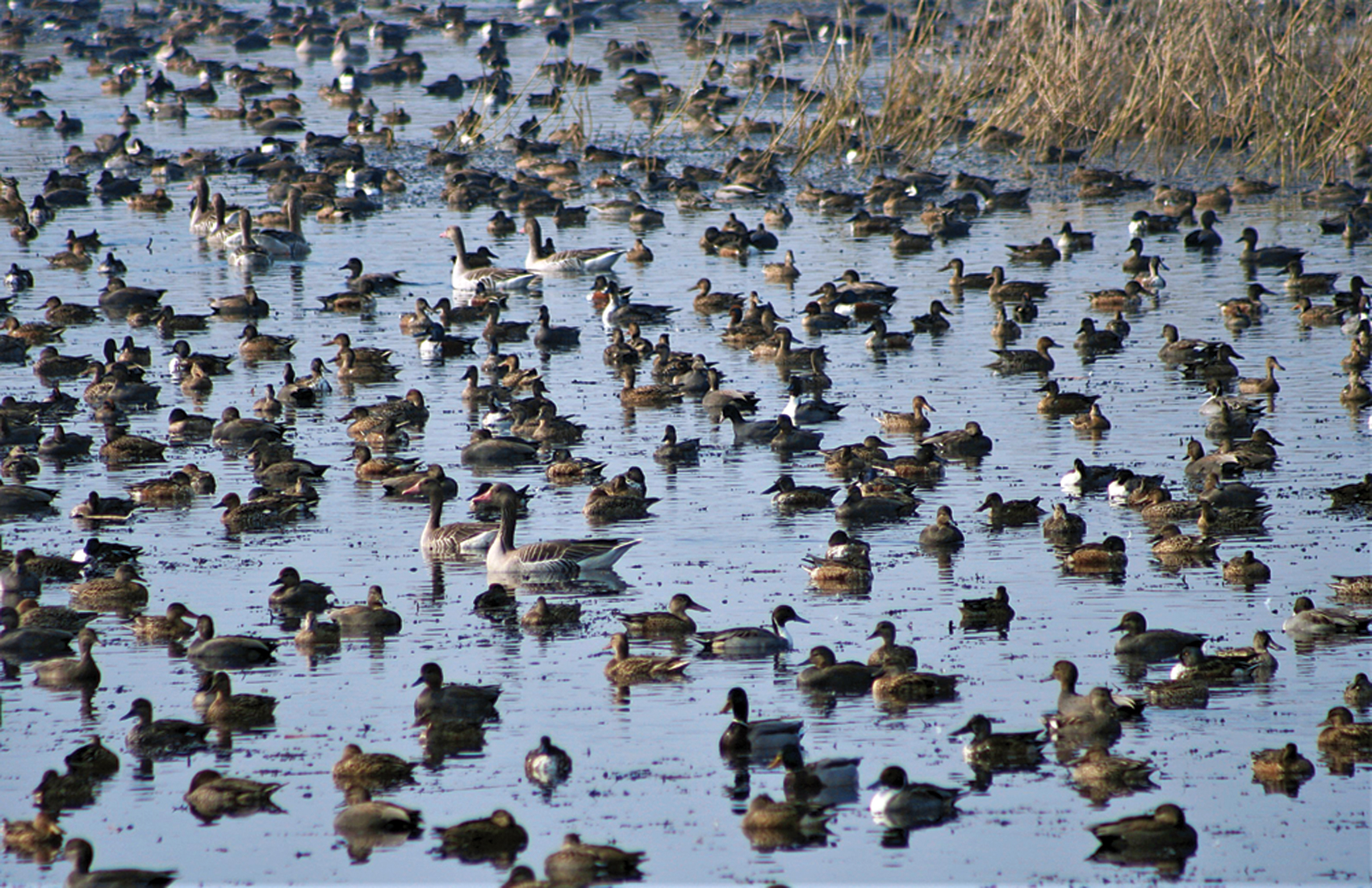
The dramatic visuals of perhaps a million ducks and geese wintering in Kashmir’s fabled wetlands is a thing of the past. On his two recent visits in 2021, the author was shocked to see the dire state of affairs at Hokersar, Shallabugh and Haigam.
Photo:Intesar Suhail
I was alerted to the dire state of affairs of Kashmir’s wetlands by a journalist, proving once again that the role of the media is vital to a functioning democracy.
Taken aback at what I saw when I visited Hokersar, I spoke with conservation organisations and wrote to the Honourable Lt. Governor of Jammu and Kashmir requesting that the Flood Control and Irrigation Department be ordered to restore the water regime of this critical wetland, which also serves as a flood moderation infrastructure for Srinagar. Dr. Siddharth Kaul, President of the Wetlands International South Asia, also wrote to the Lt. Governor stating that: “Hokersar was conferred by Government of India the status of Wetlands of International Importance under Ramsar Convention in 2005. This designation commits the Government to ensure wise use of the wetland through maintenance of its ecological character based on pathways that are aligned with ‘ecosystem approach’ and ‘sustainable development’. The current channel dredging fundamentally alters the natural hydrology of the wetland, exposing it to threats of substantive lowering of water levels, prolonged drying and terresterialisation. This also exposes this Ramsar site to encroachment threats, and we are given to understand that parts of the wetland are already under permanent agriculture.”
I visited Hokersar on September 21, 2021, along with Dr. Bivash Pandav, Director, Dr. Sujt Narwade, Senior Scientist, of the Bombay Natural History Society and Dr. Parvish Pandya, Sanctuary Nature Foundation. With us were local conservationists and birders. We were all greeted by a sea of tall impenetrable grass where once water offered sustenance and refuge to avians.
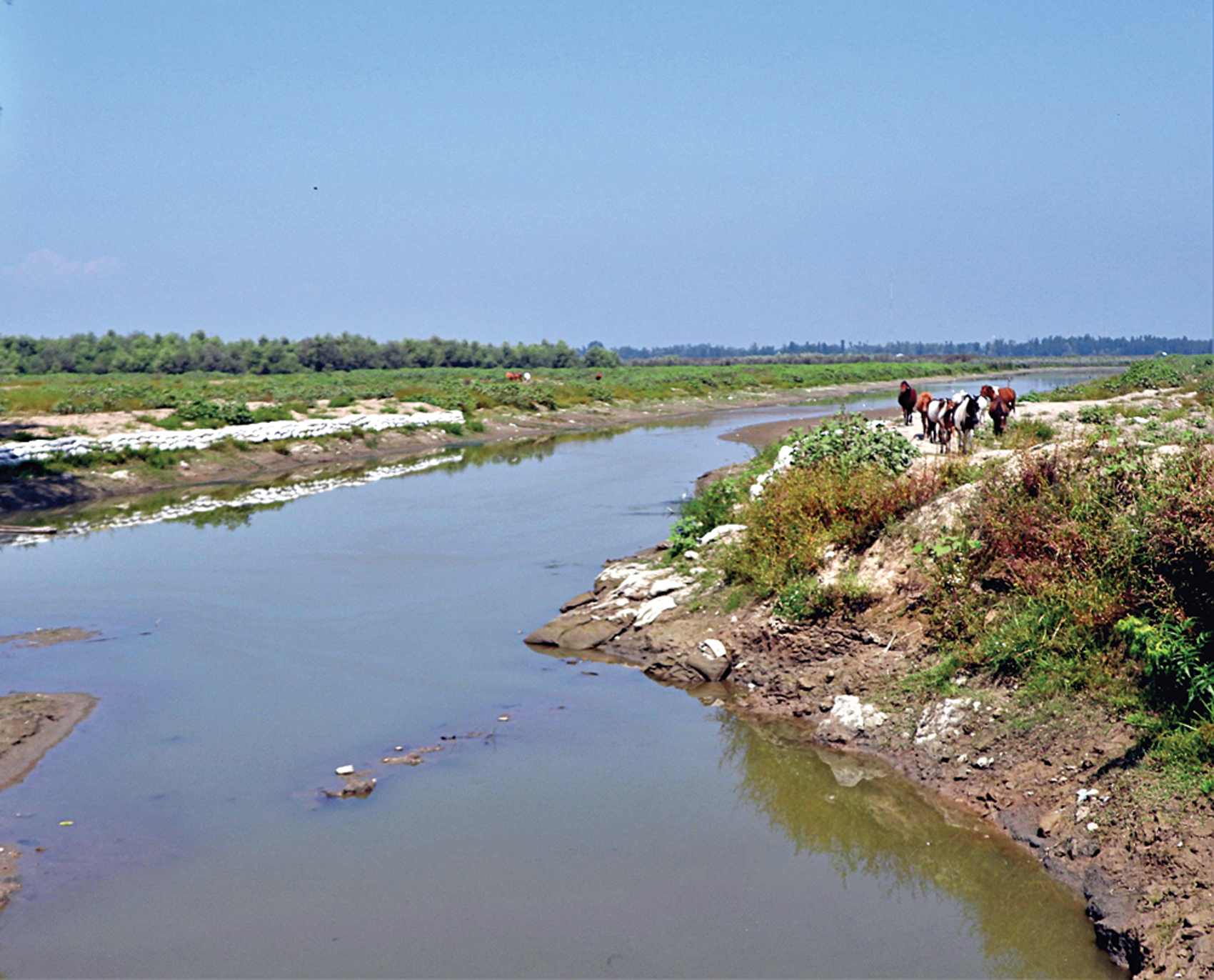
A dredged area where a dam is proposed at Hokersar, Kashmir.
Photo:Sujit Narwade
In tourism we have a perfect example of the objectives of wildlife conservation, toggling in with the objective of peoples’ welfare, since it arguably creates the largest per-dollar employment opportunities in the world. We should work with the governments of Jammu and Kashmir and Ladakh, not only to protect existing wetlands, but to restore them to their prior glory. Apart from attracting birdwatchers, wildlife photographers and nature lovers, wetlands and bogs are among the world’s most carbon-rich storehouses. Treating wetlands as climate moderation infrastructures and as livelihood creators, would shore up the economic security of this region. What is more, it would enhance India’s brand equity and put us in a place where our country becomes a global example for the world to follow when tackling the climate crisis that hangs over our heads.
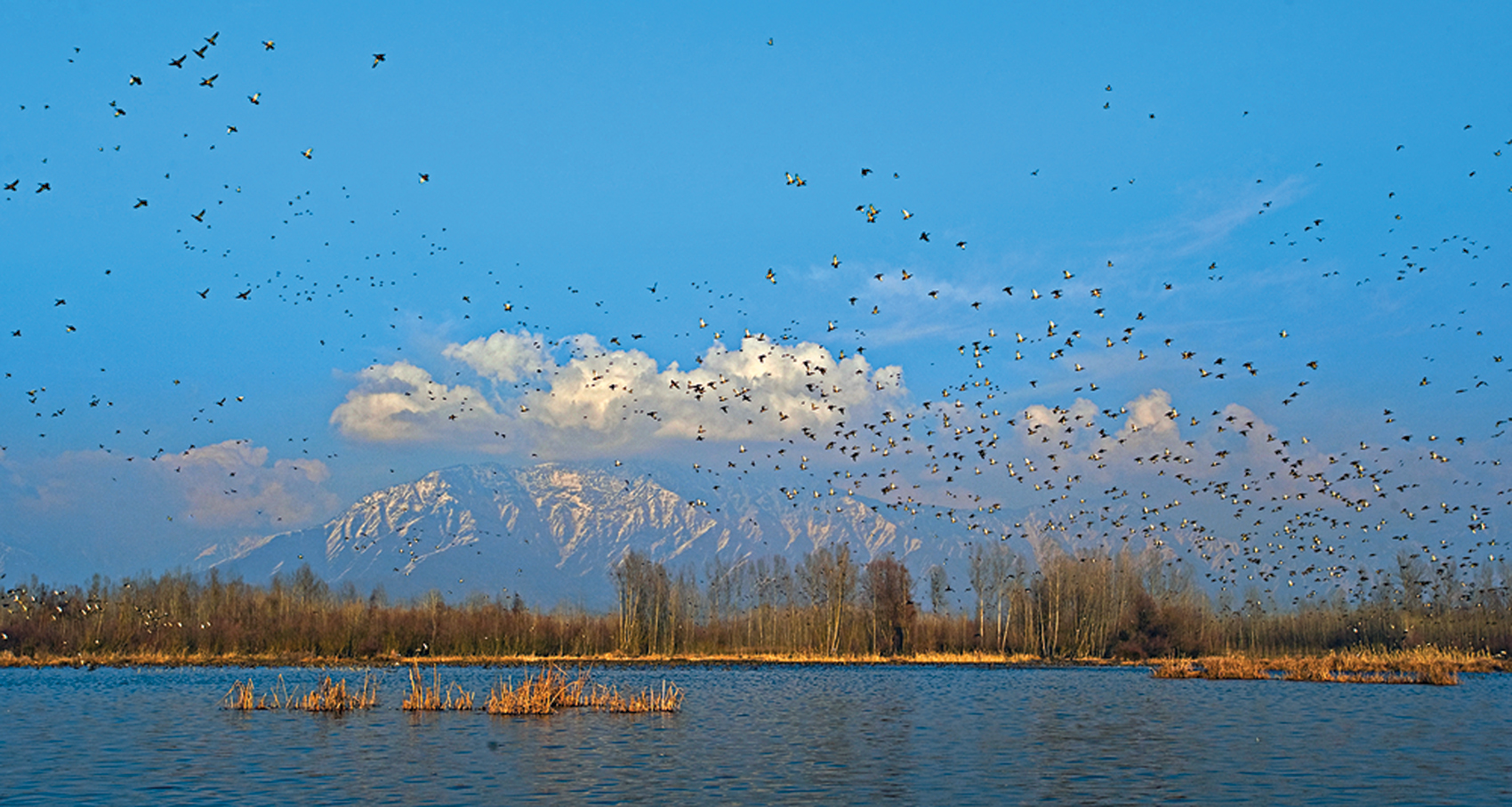
The Shallabugh wetland in central Kashmir’s Ganderbal District is one of the largest in Kashmir. Lakhs of migratory birds flock here annually, from distant parts of the world including as far as China, Siberia, Central Asia and northern Europe.
Photo:Dhritiman Mukherjee
PARADISE REVISITED The bowl-shaped Kashmir valley was best known for its biodiverse wetlands – the most famous being the Dal Lake. Close to Srinagar, and occupied by shikaras and houseboats for tourism purposes, the Dal was not exactly the best place to see waterfowl, save for huge flocks of the Common Coot and a smattering of the Great Crested Grebe. Those in search of birding experiences would travel to such wetland wonderlands as Hokersar, Shallabugh, Haigam, Mirgund, Wular, in addition to the assorted smaller wetlands that dot the Happy Valley. In my estimation over a million duck and geese once wintered in Kashmir’s wetlands, all of which I have visited in the past. I was inevitably delighted by the sheer number of waterfowl on display on earlier visits, but my recent two visits between August and October, 2021, left me dismayed. I was particularly devastated to see the pitiable condition of Hokersar, Shallabugh and Haigam. I was unable to visit Mirgund but was informed by birdwatchers, locals and officials that it had totally dried up over the past two to three years. Wular Lake, fortunately seemed to have normal water levels, but is now being unsustainably exploited by fishermen and trapa (singhara) growers. A large number of domesticated geese and ducks virtually dominated the few wild birds present in early September in Wular (most migratory waterfowl would begin arriving by mid-November).
Hokersar, Shallabugh, Haigam and Mirgund have been identified as Important Bird and Biodiversity Areas (IBAs) by the BNHS, as all of them fit A4i and A4iii criteria of BirdLife International. An A4i habitat indicates the presence of a significant number of globally threatened species on a regular basis, and A4iii means that the site has equal to or more than 20,000 waterfowl. Contemplate the fact that Hokersar, Shallabugh and Haigam have always welcomed several hundred thousand waterfowl!
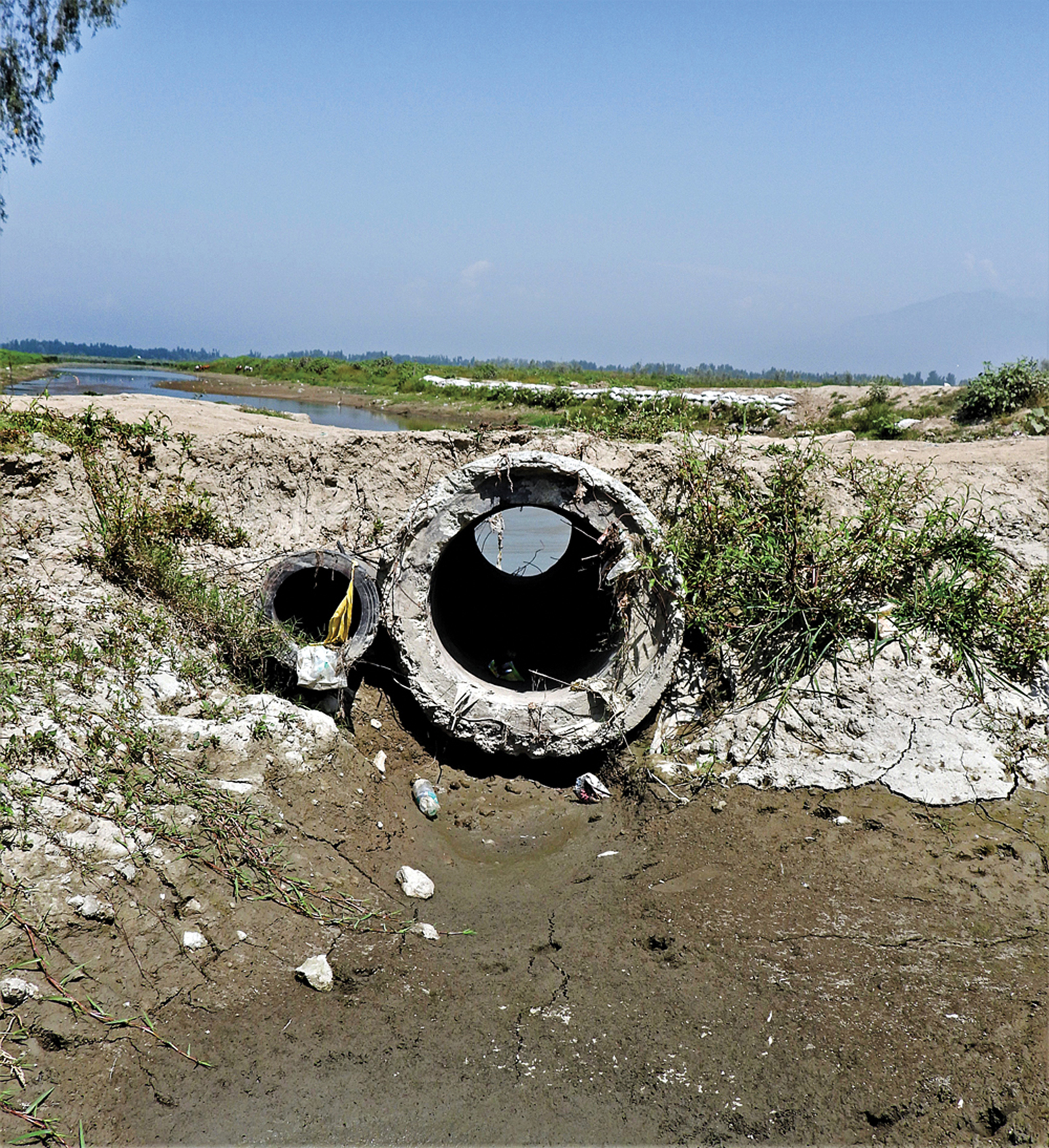
The Hokersar, Shallabugh, Haigam and Mirgund wetlands have been identified as Important Bird and Biodiversity Areas (IBAs) by the BNHS. Given the significant number of globally threatened species that visit these wetlands annually, the impact of human intervention on water flow management needs to be properly studied.
Photo:Sujit Narwade
WHAT DOES THE FUTURE HOLD? In my study-travels around India over four decades, the largest number of waterfowl I have seen were in Chilika Lake and its environs. But Chilika is huge (1,100 sq. km.) and well-protected, particularly the Nalaban Sanctuary (15 sq. km.) and Mangalajodi (70 sq. km.). Dr. S. Balachandran, Dy. Director, BNHS, one of India’s most experienced ornithologists, estimates that over a million birds find refuge in Chilika. But for sheer duck concentration, I would rate Shallabugh far higher. This 700 ha. wetland could potentially harbour 3,00,000 to 5,00,000 birds in winter, with many more using it through the year.
Though we do not have shooting records depicted on stones as is the case with the more famous Keoladeo National Park, Rajasthan, old books and gazetteers speak of enormous numbers of ducks, darkening the sky when the wetlands were healthy and hunting was legal in the Kashmir valley. Interestingly, Mallard and White-eye Pochard breed here, whereas they are winter migrants in other parts of India. Old unconfirmed records, perhaps exaggerated, suggest that boatloads of wild duck eggs were transported to Srinagar for sale each summer. I was told that wild Mallards still breed in small numbers in Kashmir, but I found no evidence of White-eyed Pochards breeding.
The wetlands of the Kashmir valley are so exquisite and biodiversity-rich, that any state government would place them on a pedestal and showcase their beauty to attract tourists, thus helping locals to benefit financially from biodiversity protection. Most easily meet the Ramsar criteria of “wetlands of international importance”. The State Wildlife Department (Kashmir’s, Forest and Wildlife departments are separate) even has a separate Wetland Division to care for wetlands.
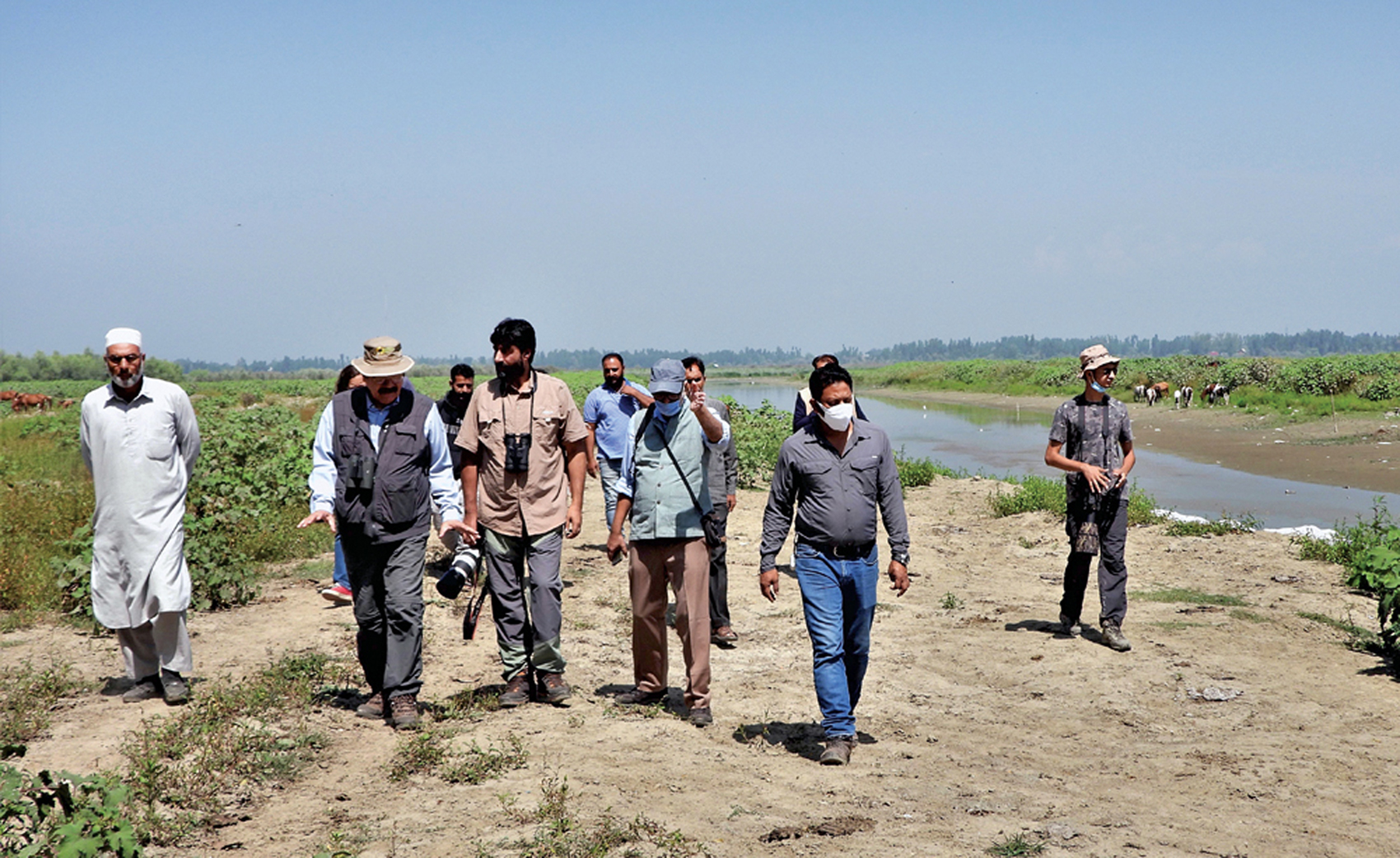
The author was unable to visit Mirgund in 2021 but was informed by birdwatchers, locals and officials that it had completely dried up over the last two to three years. The Wular Lake had normal water levels but was heavily disturbed by traditional fishermen and trapa (singhara) growers.
Photo:Sujit Narwade
The entire Kashmir valley was once a network of jheels, lakes, rivers and wetlands small and large. Both resident and migratory birds were welcomed as honoured guests. We cannot allow the marshes to be drained, nor can the people of Kashmir hope to gain by converting wetlands into crop fields. What used to be the shooting blocks for the royals and high-ranking British could now turn into real sustenance for millions of hardworking, proud Kashmiris. If we are able to deliver benefits to local communities, they could conceivably turn into the best protectors against poachers who are still active and who will take advantage of any laxity on our part.
Uttar Pradesh has the Dudhwa National Park, Assam has Kaziranga and Manas, Bihar has the Valmiki Tiger Reserve, and Rajasthan, its Ranthambhore, Sariska and Keoladeo Ghana National Parks. It is time for Jammu and Kashmir, to expand its pride and protection beyond the amazing Dachigam National Park, to other biodiversity havens mentioned above. As this very desirable step is taken, we must ensure that the mistakes of uncontrolled tourism that afflicts India’s most popular wildlife destination are not repeated in Kashmir.
From our discussions with the authorities, I came away from my most recent trips with the distinct hope that the potential to recognise Kashmir’s wetlands as a source of both income and as climate stabilising infrastructures will translate into ground action and that the magnificent wetlands of yore will once more reverberate to the sound of the avians that are an intrinsic part of the heritage and culture of the proud people of this blessed land.






